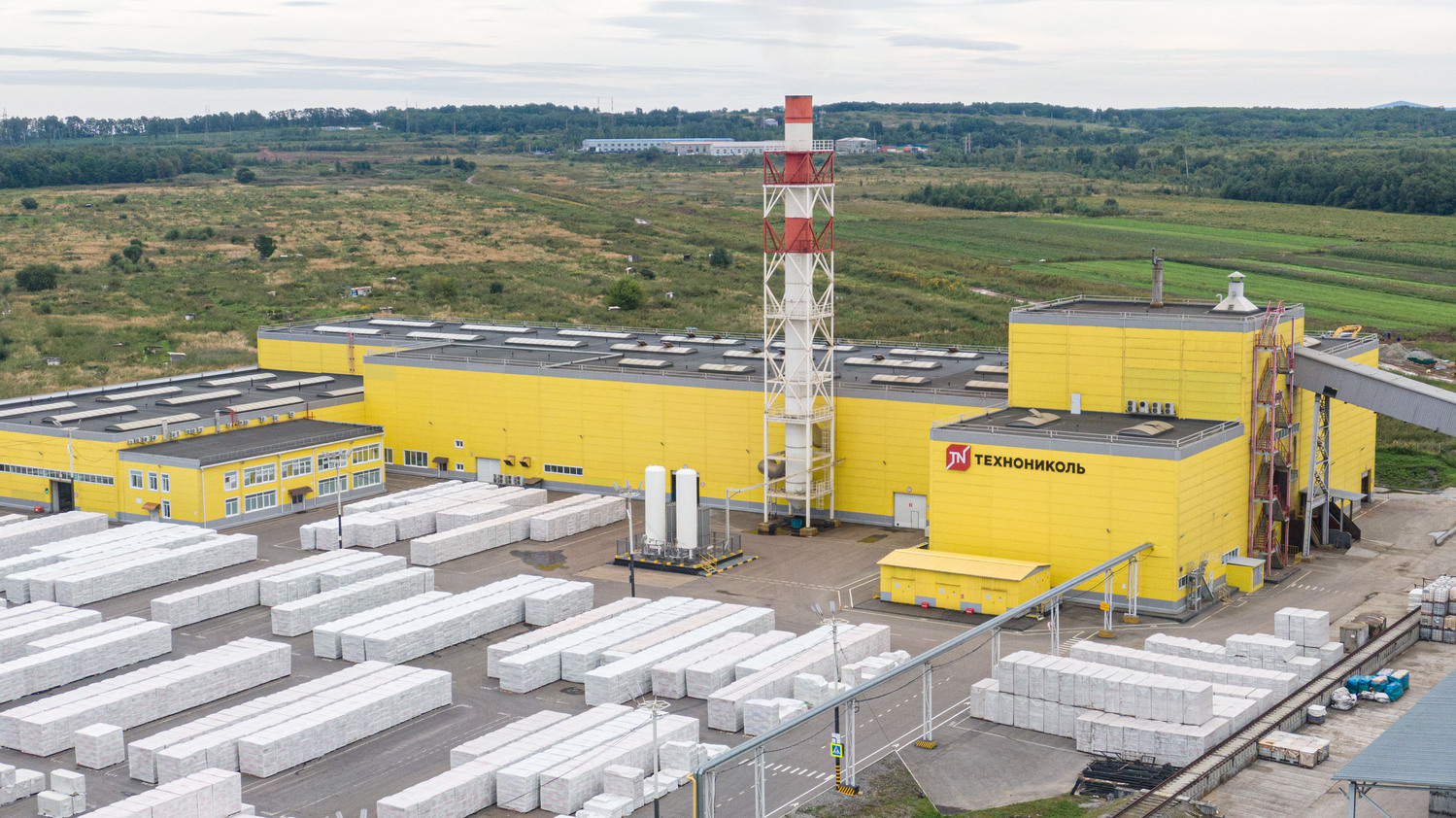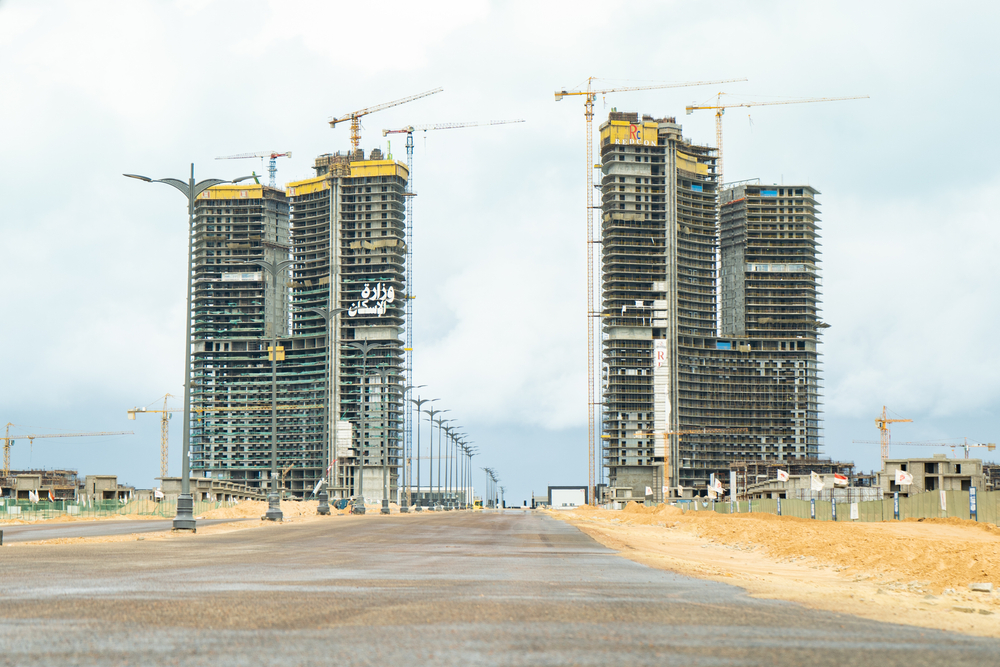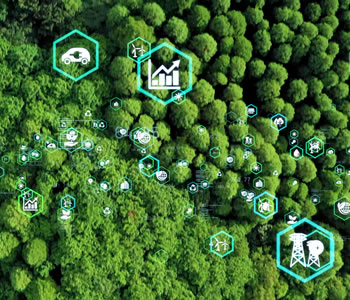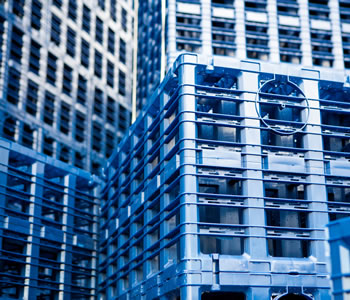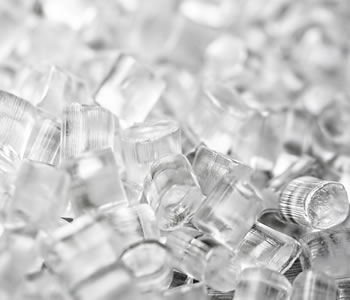Sergey Kolesnikov, Co-owner and Managing Partner of TechnoNICOL, shared his thoughts on why the Russian construction market will develop rapidly over the next five years, why Africa needs thermal insulation and how to gain trust in Europe and launch production over there.
– How did TechnoNICOL survive the pandemic and the ensuing crisis? How did your production and sales volumes change?
– We finished 2020 with about 10% growth. The production arm of TechnoNICOL achieved a revenue of RUB 112 billion. I think that if it weren’t for the pandemic, these results would have been even more impressive. We kicked off last year with rapid growth, but there was a decline in May due to the fact that this period had the harshest lockdown restrictions. During lockdown, construction projects ground to a halt across Moscow and the Moscow Region. All the same, demand picked back up again in July and only trended upward for the remainder of the year. We were very pleased with our export volumes last year – they jumped 26%. Safe to say, we ended 2020 on a positive note. And going into 2021, the first few months have not failed to disappoint.
Of our 3,000 SKUs, almost all are used in building envelopes. We have a huge assortment of polymer-based insulation materials – around 50 of them. This breadth means we can satisfy a diverse range of customer requirements for the product
– TechnoNICOL offers a very broad product range. Is this a core part of your business?
– You’re right, we have a big product range. Of our 3,000 SKUs, almost all are used in building envelopes. We have a huge assortment of polymer-based insulation materials – around 50 of them. This breadth means we can satisfy a diverse range of customer requirements for the product, including for the level of strength, flame-resistance and other characteristics that they may need. As an example, when building runways at airports in the North of Russia, the insulation materials used must be rigid and water impermeable. Naturally, we make them with a very high density. We also have less complex materials, for example, for insulating balconies. Some consumers want to apply plaster directly onto our products, which means they should have a rough surface. There are lots to choose from; it’s like how you can make lots of dishes out of rice.
Some of our materials are used inside of buildings, as sound insulation, for example. We also produce interior products, but this is chiefly down to the fact that our production lines can produce them, as TechnoNICOL puts all available resources to work.
– What is the driving force behind creating a product, does a customer give you a brief, or do you bring your own ideas to market?
– Market demand plays a big role, of course, but in 60%–80% of cases, we actually develop the products ourselves. First, we try to promote the new product with designers and property developers. When we hear positive feedback, we start to bring it to the market. Still, it usually takes around eight years to go from idea to mass market product. It makes you start to think that you’ll soon go bust. But thanks to our wide product range, TechnoNICOL can afford to add an additional, currently unprofitable solution onto the existing 20, knowing that it will become profitable in the future.
TechnoNICOL has a strong promotion team that keeps a close eye on the technologies available on the American and European markets. Initially, 90% of our technology solutions came from Europe, with only a small amount coming from the USA. But now the company has already built up its own experience, product solutions are being transformed, and their formulations are being reshuffled. We actively interact with designers and industry-specific universities. We have 18 training centres, and each of them has links with one or two universities that specialise in construction.
The TechnoNICOL Construction Academy has training centres in Yekaterinburg, Krasnodar, Naberezhnye Chelny, Ryazan, St Petersburg, Khabarovsk, Belgorod, Kazan, Kumertau, Moscow, Novosibirsk, Ufa and Cheboksary, as well as centres abroad in Nur-Sultan and Minsk. They help to train specialists in the installation and quality control of thermal and sound insulation systems, waterproofing, laying foundations and roofing, etc. The programme’s partners include Belgorod State Technological University, Kazan State University of Architecture and Engineering, Ufa State Petroleum Technical University, Bashkir State Agrarian University, and others.
– What is your outlook for the construction industry?
– I would like to mention that in December last year, our team defended our proposed investment programme for the next five years. I upped spending more than 2.5 times to RUB 60 billion. This move alone proves that we believe in the market’s future growth. As you may know, the Deputy Prime Minister of the Russian Federation, Marat Khusnullin, announced ambitious plans for the construction industry. He set the task of raising the amount of housing constructed annually to 120 million square metres by 2025 (according to Rosstat, 82.2 million square metres were built in Russia in 2020. – Ed.), which includes stepping up private housing projects from 36 million to 45 million square metres. It sounds optimistic to Russians, and to me, as a businessman. It means that the demand for building materials is only set to grow.
Despite the pandemic, the Russian construction market fared quite well. Attractive mortgages played a huge role, which is partly why the industry finished 2020 on a high. These mortgages have meant demand for housing has exploded, and it remains high even though real estate has risen in price. As you may expect, the volumes of building materials being ordered by developers have risen sharply. This is quite a powerful factor.
Construction growth in Russia is driving strong demand for TechnoNICOL products
– You mentioned that you had a successful 2020 export-wise. How does the quality of TechnoNICOL products compare to insulation materials made, say, in Europe?
– Our biggest competitors – ROCKWOOL and Knauf – are serious about their production technology, but the quality of our products is definitely not inferior. Between 2006 and 2020, TechnoNICOL actively bought new, advanced equipment, so its average age sits around seven to eight years. For context, the average in Europe is about 10 to 20 years. When our European colleagues visit our production facilities, they are envious in a good way: they see that we have an advanced production automation system, seventh-gen Siemens electronics and modern packaging lines. In terms of equipment, we are by no means inferior to the leading players, and we are even ahead of some companies. This is one of our strong points.
In December last year, our team defended our proposed investment programme for the next five years. I upped spending 2.5 times to RUB 50 billion. This move alone proves that we believe in the market’s future growth
– Is it difficult for Russian companies to do business in the EU?
– It’s no walk in the park. For the first few years, we had to trade at a big discount of 10%–15%. We started like this in Poland, but after 20 years of work, we have proven the quality of products under the TechnoNICOL brand and we are no longer considered a cheap company. Our market share is now about 20% there, and we are the second largest player in terms of sales. In short, you have to slog away for ten years to show what you can do, and only after these ten years the local market accepts you as an equal.
– You have your own capacities in Europe. Why are you building them, surely it’s easier to just increase exports from Russia?
– The point is to grow. We anticipated a boom in the consumption of insulation materials in Russia, and we felt that domestic capacity should be earmarked for the domestic market. On top of this, the demand for Russian products is simultaneously growing abroad. There is good demand in Europe, and we don’t want to lose this market, the more so that we are stimulating its development through our own product offerings.
We explored options to buy existing assets. We looked into family-owned companies, but they typically have “dirty” production facilities in city centres. We realised that this was not a viable option: for the sellers’ asking prices, it was easier to build a new, modern enterprise that would have twice as much capacity and more productive equipment. So that’s exactly what we did, and it was the right long-term decision. The more so that the segment we are investing in – stone wool products – is highly consolidated in Europe. Just three or four players – our main competitors – dominate 80% of the market. To compete with them, we need solid fundamentals.
– Which markets do you plan on entering to support future business growth?
– We have production facilities in Italy, and North Africa falls under their sphere of influence. At the same time, we are looking at Egypt with great interest and are considering building a plant to produce thermal insulation materials under the Russian Industrial Zone in this country. The big plusses of being there are the accessibility of bitumen and the proximity of the Suez Canal, which offers cheap logistics. From there, we could export products both to Europe and Asia; for example, to India and China, two countries that currently place a lot of orders. But the biggest thing is that Egypt is an excellent foothold to the whole of Africa.
In the past, we only sold products there sporadically, but now a stable customer base is forming. The countries of Africa are some of the main emerging markets by all measures and indicators. The consumption of building materials is still much lower than in Russia or Europe, but at the same time, there is a rapidly-growing population of almost 1.5 billion people, and roofing and thermal insulation materials will be in demand there.
But everyone gets shocked by this: why do they need thermal insulation in Africa? The answer is simple: to keep the cold inside the room. If you want your house to be 21 ºC when the temperature outside is over 40 ºC, you have to constantly cool the air. But this would lead to a huge electricity bill from air conditioning. Just look at electricity blackouts in New York: when it’s hot, everyone turns on their air con and the power grid can’t handle it. I think that Africans want to live in comfort: they will install air con systems, but if there are no high-quality insulating materials in their houses, it will lead to a risk of power outages.
Africa is a huge ocean of future opportunities, and I think our insulation will go down very well. It will probably take years to get a handle on the market, but the potential is remarkable.
A stable customer base is forming in Egypt, providing TechnoNICOL with a foothold to Africa (photo: ongoing construction of an office complex in New Alamein City, Egypt)
We are looking at Egypt with great interest and are considering building a plant to produce thermal insulation materials under the Russian Industrial Zone in this country
– What are some other less well-known markets you are looking at?
– We have achieved stable supplies to New Zealand and Australia over the past two years; our first customers in this region heard about us by the “old-school” word of mouth. New Zealand is not a very large country; however, TechnoNICOL’s current pricing and quality of deliveries are keeping the local customers satisfied. It’s interesting to note that first the Chinese drove the Americans out of this market, now we are doing the same to the Chinese. So again, what gives our product an edge? Firstly, we work with modern, advanced equipment that drives high productivity. Secondly, the costs of electricity and gas in Russia are two to three times cheaper. Electricity here costs 5 cents per kilowatt; in Poland, it’s 9 cents; in Scotland, it’s 14 and in Germany, it’s 16. This all translates to a high-quality product with low personnel and energy costs. Thirdly, we receive tax relief. We have built new enterprises across Russia and received certain benefits almost everywhere, and although this preferential treatment is coming to an end, these tax deductions for investments helped us to get off the ground.
– “Going carbon neutral” currently dominates the environmental agenda in many countries, and production requirements are becoming more strict in this respect. Does this trend have an impact on your business?
– We understand that this topic cannot be avoided and are now developing a strategy to reduce our emissions of harmful substances. I’m not only talking about carbon here, but also about sulphur oxides, nitrogen and phenol. Due to the nature of the technology itself, we cannot completely eliminate carbon emissions, but we can actually reduce them by 30%–40% using other fuels, for example, in the production of stone wool.
Technology-wise, there are no emissions at all in our work with polymers. But in general, we take the idea of carbon neutrality very seriously. Between 10% and 15% of our fixed-asset investments currently go into projects that somehow aim at improving our environmental performance, as they are related to the purchase of technologies that minimise emissions of harmful substances. In particular, we are taking part in the pilot Clean Air programme in Chelyabinsk. Of the five targets in the project, four have already been achieved. We have reduced our CO2 and phenol emissions, and the developments that we tested in Chelyabinsk will be rolled out across the company’s footprint.
– Waste disposal is a pressing issue nowadays. You planned to build a plant in Khabarovsk to recycle waste polymers. How far along is this project?
– The plastic recycling line to produce PVC drainage systems was officially greenlit at the end of 2020; granted, one year behind schedule. We now recycle up to 10,000 tonnes of all kinds of polymers per day. It is mainly polystyrene, and to a lesser extent polyethylene and polyester.
You may be surprised to hear that we import 80% of the polystyrene for the Khabarovsk plant from Japan. In Japan, they install small plastic melters at fish markets or in stores where they sell appliances. To put it simply, the machine contains an electric boiler inside of it. They put disposable dishes or packaging inside, it melts, and then a plastic briquette pops out. These briquettes are brought to us: they are easy to work with, and it stops the plant from becoming a landfill. We pay EUR 500–550 per tonne of Japanese plastic. Doing this is currently more profitable than buying virgin polymers, as their price has shot up.
But if we try to recycle local plastic there, the plant in Khabarovsk will take a long time to develop. So far, there has been no particular public support or systematic state effort to recycle waste, so TechnoNICOL is developing this project solely through the work of activists. We sought out individual entrepreneurs, gave them two or three plastic melters, and everything that they are able to collect and process is brought to us in a more or less usable form.
Yet in Russia, attitudes towards the waste problem are gradually changing. People are getting used to sorting waste. Now there are separate waste containers: plastics in one, paper in another, metal in the third and glass in the last one. Russians are getting used to it. It is also becoming profitable for enterprises to recycle materials. As an example, TechnoNICOL has 55 production facilities. Each of them can generate additional revenue from the sale of recycled materials to the tune of RUB 5–10 million per year.
Between 10% and 15% of our fixed-asset investments currently go into projects that somehow aim at improving our environmental performance, as they are related to the purchase of technologies that minimise emissions of harmful substances
– How are key decisions made at TechnoNICOL? How much time is spent on operational management, and how much on strategic planning?
– Work follows our developed planning calendar. We have an official meeting with the heads of the company’s business units every quarter. Everyone tells TechnoNICOL’s top managers about their problems and achievements. About 80 people are present at the meetings: managers of various levels, some in-person and some online. It takes a whole week to hear out and discuss the reports of the leaders of all our business units (we have seven of them), making a total of four weeks per year. Then we have 10 functional leaders: the heads of finance, legal, sales departments, IT director, etc. We meet with them twice-yearly, and there are also a large number of people present at that meeting. The topics that seem promising are then fine-tuned into a working solution by the specialists involved.
As a rule, our strategic planning cycle runs from October to December. This work is invaluable, since all growth is founded on thorough planning. We try to systematise internal processes to make them match up with external ones. Then we compare the forecasts with the actual outcomes. The most interesting thing is that they are up to 98% accurate. Some years, the margin of error is 5%–7%: there are more optimistic or conservative forecasts, but in general, the results are close to the mark.
– How do you spend your free time?
– I love two things. First and foremost, I like getting a good night’s rest. Second, I like getting fresh air; I spend about 10 to 12 hours a week being active. When I can, I go skiing: I’m into biathlon, and sometimes, I even compete. I skied 20 thousand km this winter, including around 20 competitions. The season has ended now, so I run, swim and cycle.
The biathlon is one of Sergey Kolesnikov’s long-standing favourite hobbies
– How would you describe the relationship between TechnoNICOL and SIBUR?
– We have been working with SIBUR for almost 20 years now. I would say that we have become like family, our relationship is lasting, calm and founded on trust. Our specialists understand the pricing of each particular product, the factors that influence price and how it is calculated.
We have been working with SIBUR for almost 20 years now. SIBUR is our main supplier
SIBUR is our main supplier. We buy polyvinyl chloride (PVC) and would like to buy more, but SIBUR’s facilities don’t produce exclusively for TechnoNICOL. [He smiles] Between January and April this year, our consumption of PVC rose by four times, in line with the increase in sales. We plan to solve the raw materials shortage through our own production facilities. An additional PVC line is in the pipeline in Poland.
We also buy quite a lot of SBS polystyrene granules to produce expanded/extruded polystyrene. In general, SIBUR fulfils all our requests. We have big plans for methylene diphenyl diisocyanate (MDI), which is currently seeing a surge in consumption. We currently import about 10,000 tonnes of MDI, and when SIBUR introduces its own production facilities, our needs will jump to 30 thousand tonnes. But we won’t stop there: we plan to buy up to 50 thousand tonnes of isocyanates per year.
Isocyanates are a major ingredient of polyurethane products, which have a wide range of applications: from the production of electrical cables and building insulation to the manufacture of artificial leather and filling for upholstered furniture. MDI was produced domestically for the Soviet military until the collapse of the USSR in 1991, when production was suspended. According to data from plastinfo.ru, demand for isocyanates in the Russian market is currently fully covered by imports (import volumes in 2018 were estimated at 176 thousand tonnes).
Download PDF


